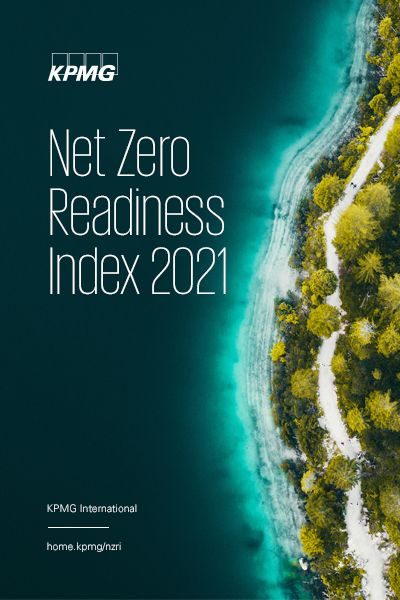The buildings sector sees relatively low levels of variability in decarbonization readiness between countries. This is due to consistent policy responses to building energy efficiency and continuing efforts to encourage the spread of green buildings. On average, the countries in the NZRI perform better on policies for low energy new buildings than on retrofitting existing buildings.
Overall, efforts to decarbonize buildings look inadequate as extreme weather events are increasing demand for electricity and driving growth in the sector's energy consumption. Emissions from buildings plateaued between 2013 and 2016, but both direct and indirect emissions from buildings have since increased. This is due to increased demand for both heating and cooling which has occurred despite a reduction in emissions intensity measured by energy use per square meter of floor space. Extreme heat in 2019, which was the second hottest year on record, was partially responsible for higher electricity requirements that year.
As climate scientists expect extreme weather events to become more frequent in future, the energy efficiency of buildings will need to improve faster. Further, buildings need to be climate risk resilient as assets for both households and businesses. The climate risk resilience of the buildings sector is also closely tied to the resilience of the energy system, particularly for electricity and commercial heating.
Top five countries in buildings decarbonization readiness

Retrofitting challenges
The majority of countries in the NZRI support policies for retrofitting existing buildings, but for many this remains a huge challenge to their decarbonization efforts. The Index highlights the strong need for investment in delivery with all countries except the UK having underdeveloped retrofit markets. Inertia, capital cost and lack of awareness of benefits are among the factors that slow the decarbonization of existing buildings, even though improving energy efficiency usually saves money as well as emissions.
Other than energy efficiency measures, solutions to decarbonize such as on-site solar or solar with battery solutions need to be explored. If space is a constraint, subject to regulations, off-site renewable energy procurement solutions are also often available and can be explored.
Mike Hayes says that organizations often fail to consider the option of improving existing buildings. He adds that such work can be beset by arguments between landlords and tenants and that accounting rules can lead to energy efficiency projects ending up on organizations' balance sheets unintentionally.
Government action
New construction needs to be regulated so it is built smart, green and efficient. The International Energy Agency calculates that new high performance construction will need to increase from around 275 million square meters to cover almost 5 billion square meters to support the organization's 2030 Sustainable Development Scenario.1 The higher costs involved make it unlikely that market forces alone will deliver these.
The NZRI shows governments in 23 of the 32 countries prioritizing energy efficiency by implementing mandatory building energy certification. However only Canada and Japan have substantial coverage of building sector emissions included in their UN climate change nationally determined contributions, a mechanism that the Global Alliance for Building and Construction sees as crucial to encourage faster and more ambitious large-scale action along with long term strategies and regulatory measures.2
Delivery capability
The green buildings market across the countries in the Index is in its infancy. But Japan and South Korea, which are placed second and third overall in the buildings sector, are both actively developing building energy efficiency and carbon management solutions.
Hayes says that projects will increasingly need to be built to high environmental standards to attract high-quality corporate tenants, including by providing access to green power including integrated solar or hydrogen fuel cells. Companies planning foreign direct investment, particularly those with heavy power needs such as data centers, are likely to increasingly insist upon such access: “It is critical for any country adopting a meaningful direct investment program that they can guarantee renewable energy for those companies,” he says.
We have for a long time seen a high interest in sustainability issues within real estate in Sweden, and have had success, particularly with new buildings prioritizing energy efficiency and the increasing use of wood rather than concrete. Refurbishing existing buildings is more difficult in the face of increasing extreme weather conditions.
Get in touch
Argentina | Australia | Brazil | Canada | Chile | China | Denmark | France | Germany | Hungary | India | Indonesia | Italy | Japan | Malaysia |
Mexico | New Zealand | Nigeria | Norway | Poland | Russia | Saudi Arabia | Singapore | South Africa | South Korea | Spain | Sweden | Thailand |
Turkey | United Arab Emirates | United Kingdom | United States
1 'Building envelopes', International Energy Agency, accessed July 2021. https://www.iea.org/reports/tracking-buildings-2020/building-envelopes
2 '2020 Global Status Report', Global Alliance for Buildings and Construction, 2020. https://globalabc.org/sites/default/files/inline-files/2020%20Buildings%20GSR_FULL%20REPORT.pdf




